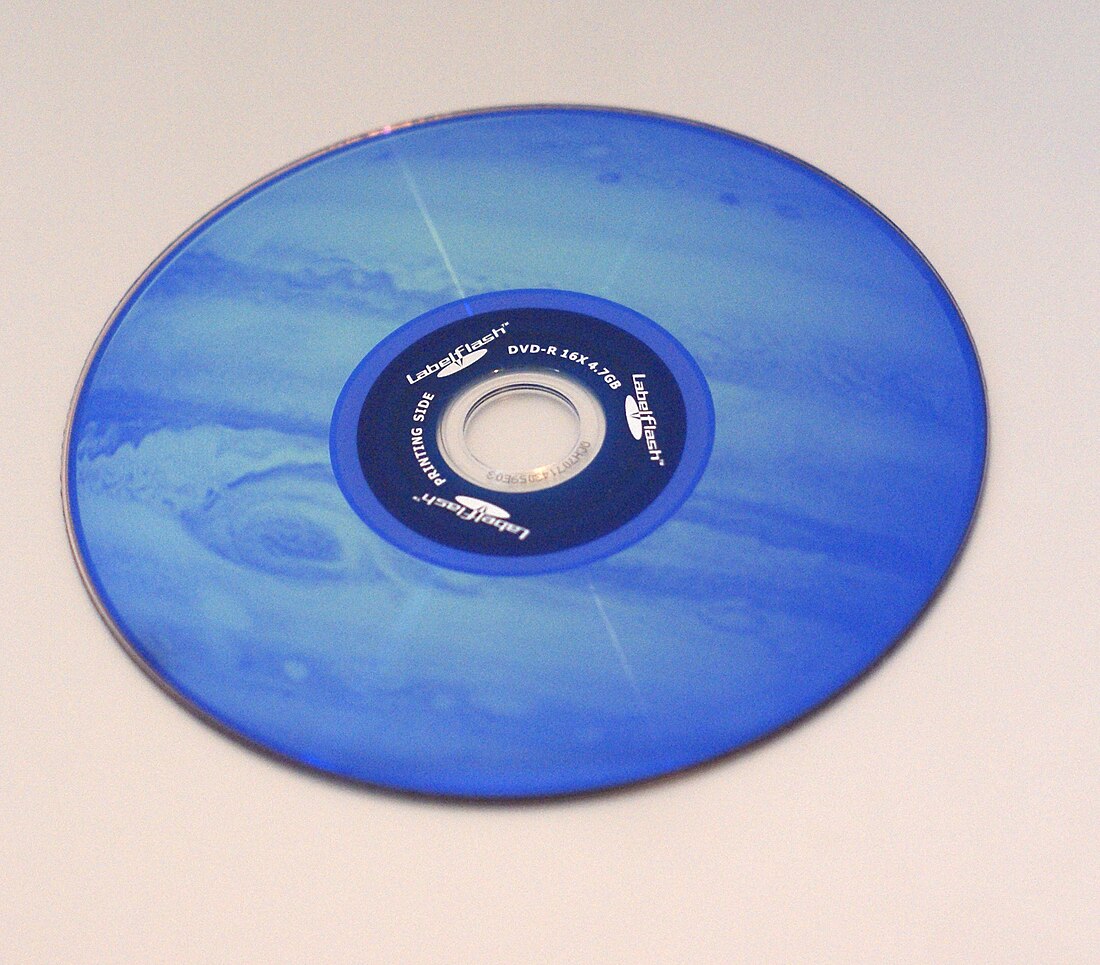Labelflash (sometimes written LabelFlash) is a technology which allows users to burn custom designs or images onto proprietary DVD media first announced in October 2005 as a collaboration between Yamaha and Fujifilm.[1][2] While Yamaha developed the optical drives, Fujifilm manufactured the proprietary Labelflash optical discs.[3] NEC manufactured the first Labelflash compatible drive, the ND4551,[4] which was released in December 2005.[5]


Burning Labelflash media is supported by Nero Burning ROM version 7 and newer.[6] Yamaha partnered with Toshiba[7] and Gateway[8] to provide Labelflash as a feature in computers made by those companies.
Production of Labelflash media was halted on December 22, 2016.[9] Labelflash was officially discontinued in 2017.[10]
Technical details
In Labelflash, the standard recording head of an optical drive is repurposed to burn images onto a layer of dye made for this purpose on the top of proprietary Labelflash optical media.[11] The dye is 0.6mm below the surface so as to protect it from the elements.[10][12]
The resolution is adjustable between 300 and 1800 dpi (dots per inch). Up to 256 monochromatic shades can be used in the image.[4] The labeling process takes 7 minutes at the lowest resolution and a half hour at the highest.[4] Labelflash is backwards compatible with Yamaha's earlier DiscT@2 technology—this allows Labelflash-compatible optical drives to engrave onto the data side of discs as well.
According to Yamaha, a new iteration of Labelflash which supported four color printing was in the works[11]—however, as Labelflash support was discontinued in 2017,[10] this never came to fruition.
Reception
The technology is often compared with Hewlett-Packard's LightScribe, released one year earlier. After its release, Labelflash was not available in the United States until 2007,[12] giving HP a three-year head start in the US market. Furthermore, worldwide, proprietary Labelflash optical media costed double that of comparable LightScribe media,[10] at US$2.40 per disc,[13][14] which Tom's Hardware called an "exorbitant" price that made printing "painful" as test prints were not worth doing.[13] Commenting on the price, Engadget's Marc Perton said he'd "stick with [his] Sharpie for now."[15]
Reviewers, such as Gordon Laing for Personal Computer World, also noted that when compared to LightScribe, Labelflash images looked more "unnatural" and less "vibrant".[14]
See also
References
External links
Wikiwand in your browser!
Seamless Wikipedia browsing. On steroids.
Every time you click a link to Wikipedia, Wiktionary or Wikiquote in your browser's search results, it will show the modern Wikiwand interface.
Wikiwand extension is a five stars, simple, with minimum permission required to keep your browsing private, safe and transparent.
